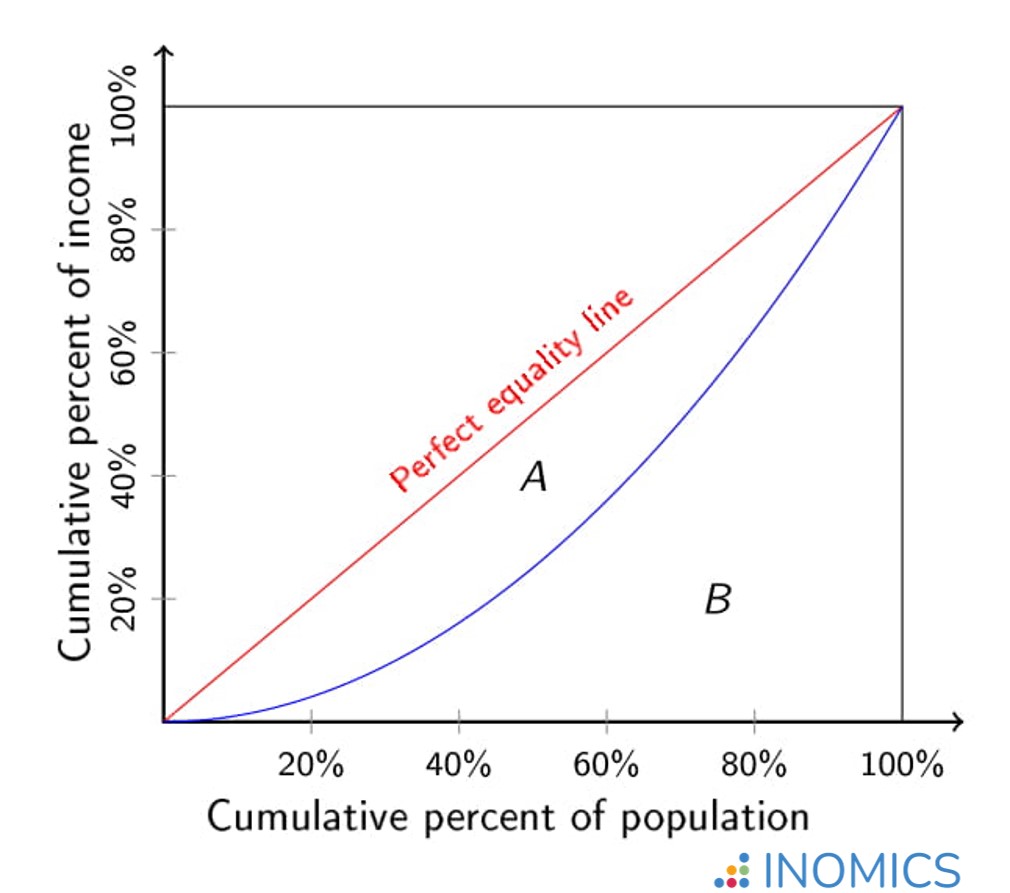Economics 4.2 - Poverty and inequality
1/7
There's no tags or description
Looks like no tags are added yet.
Name | Mastery | Learn | Test | Matching | Spaced |
|---|
No study sessions yet.
8 Terms
What is the difference between absolute and relative poverty?
Absolute poverty - When people are unable to afford sufficient necessities to maintain life. Characterised by lacking basic human needs such as food, clean water, shelter etc. The world bank defines it as anyone living on less than $1.90 a day.
Relative poverty - About peoples income compared to those in their area. If someone’s income falls below an average income threshold for the economy, they’re at the bottom end of the income scale. In Britain, relative poverty is classed as those with an income of less than 60% of median household income after deducting household costs. 1 in 5 in the UK live below the poverty line, with 14m in relative poverty.
What is the poverty line and poverty trap?
The poverty line is the minimum level of income deemed necessary to achieve an adequate standard of living in a country.
The poverty trap affects people on low incomes, when the tax and benefits system creates a disincentive to look for work or work longer hours. By working longer hours, individuals may find they lose income due to income tax and NI contributions.
What are the causes of changes in poverty level?
Poverty is caused by unemployment, a lack of skills, health problems and income dependency.
Absolute poverty tends to fall as GDP increases, assuming the state provides support.
The 2 main causes of growth of relative poverty are if those on higher salaries see larger income growth than those on lower salaries or changes in government spending and taxation. Relative poverty in the UK has been growing for many reasons:
There has been growing inequality in wages growth, with the highest paid jobs seeing their wages increase higher than those on lower wages. Those in the public sector have had low wage increases due to the policy of austerity. The wages of the richest are not 170x the average worker, compared to 60x prior.
There has been a growth in underemployment, zero-hour contracts and part-time jobs, all of which mean lower wages for workers.
The decline of trade unions has left many workers unable to bargain for higher wages.
What is the definition of wealth and income and how are they likely to be distributed?
Income is a flow of earnings whilst wealth is a stock of assets. Income inequality refers to the extent which income is distributed unevenly.
Wealth is likely to be more unequally distributed because assets that make wealth can be accumulated over time. People who are wealthy now can generate an income from those assets, allowing them to build up a stock of assets.
What are the measures of income inequality?

Lorenz curve - Shows the cumulative percentage of the population plotted against the cumulative percentage of income that people have.
Gini coefficient - A/(A+B) of the Lorenz curve
What are the causes of wealth and income inequality within countries?
Wages - Some workers earn more than others, which could be because of higher skills, working longer hours or being more in demand. Will eventually lead to a wealth inequality, as those who are richer can spend more on assets.
Wealth levels - Some people may have larger wealth levels, either through saving or inheriting it. This makes them able to build more wealth faster, for example as they are able to take on more risky investments. These high wealth levels also mean people can earn rent and interest on their assets so can generate income.
Chance - Those who brought houses in the right area or assets will see a huge increase in the price and therefore their wealth. People could also be lucky to inherit their people.
Age - Working adults at the peak of their year will have a higher income, as well as likely more assets.
What are the causes of wealth and income inequality between countries?
The Kuznets hypothesis says that as society develops and moves from agriculture to industry, inequality increases as the wages of industrial workers rise faster than that of farmers. Then, wealth is redistributed through taxation and govt spending to inequality falls.
However, Piketty discredits this theory by arguing that inequality rises as the country develops as the rate of return on capital grows, so the rich get richer and inequality increases.
What is the significance of capitalism in wealth and income inequality?
A capitalist economy leads to income inequality because of wage differentials. Wages vary based on demand and supply.
Individuals also own resources and thus wealth differs based on the assets they own. Can be passed on or gained through saving.
Argued that equality can’t be achieved in a capitalist society where the possibility of having more is important to encourage work. Without incentive, there is no reason for people to try.
Therefore, a degree of inequality is necessary and desirable, but excessive inequality causes problems with efficiency and social justice.